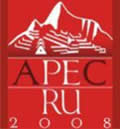United Kingdom
| Welcome |
| Peru in Brief |
| History |
| Geography |
| Government & Politics |
| Maritime delimitation between Peru and Chile |
| News |
Links |
| THE VICEROYALTY | ||
The first viceroy, Blasco Núñez de Vela (1544-1546), inaugurated the Colonial Period - an interval that was to last almost 300 years. |
||
Spanish rule brought Catholic evangelisation and the introduction of the Spanish language. A royal decree enacted May 12, 1551 sanctioned the foundation of the Greater University of San Marcos, acknowledged today as the oldest such institution in the Americas . |
||
Peruvian religious sentiment found consistent and remarkable expression in works of art. A major example from the colonial period is the Cuzco School of painting. In blending the Spanish baroque style with native art themes and sensitivities, the followers of this movement – many of them Peruvians – produced what art historians have termed the Latin American Baroque. Diego Quispe Tito is the school's best known representative. |
||
The Catholic faith was embraced in Peru thanks to the untiring evangelising work of priests and (above all) missionaries, and has revealed itself in the exceptional holiness of a few individuals. |
||
Five Peruvians actually attained sainthood. Rose of Lima, Patron Saint of the Americas and the Philippines, was born in Lima in 1586. The others are Martin de Porres, the first saint of African descent, and the Spanish-born evangelisers Toribio de Mogrovejo, Juan Macías and Francisco Solano, whom the Church considers Peruvians because their holiness emerged during their apostolate in Peru (where their relics are also preserved). |
||
All symbolise the miscegenation which took place between the Spanish and the native cultures. |
||
The profound religious faith that so distinguished these saints is also discernible in the fervour with which Peruvians take part in the procession of the Lord of Miracles each October. |
||
Attended by more than a million faithful, the procession is the biggest and most pious religious event in Spanish America . |
||
Works by prominent artists from Europe were also created in Peru during this time. Especially noteworthy are the canvasses at the church of La Merced by Mattia Preti from Calabria, an artist whose baroque style had emerged in works for St. John's Cathedral at La Valletta (Malta), and those by the Spaniard Francisco de Zurbaran, whose copious production may be viewed at the Convent of San Francisco and the Church of the Good Death (Iglesia de la Buena Muerte) in Lima, among other places. |
||
Spain 's extraordinary power in these times can only be explained by the vast quantities of gold and silver that were extracted from the lands of the former Inca empire and enabled the monarchy to sustain the cost of deploying armies throughout much of the European continent. |
||
| <BACK> |





